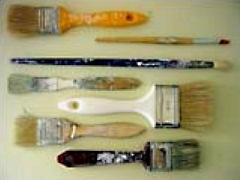Mouthful of Systematic Innovation
The Six Thinking Tools for Predicting New Products
Published in TheMarker magazine, August
7, 2000
Author: Ari
Manor, CEO, ZOOZ
Part II
C. "Distribution" of Toothbrush Components
"Distribution" is a less frequently used thinking tool. Perhaps this is because the process of distribution is often misunderstood.
"Distribution" focuses on the product’s components (e.g. - handle, head, and bristles). When using this thinking tool, we need to treat each component as a "resource" and use this resource in a new way. This new way can be by "slicing" it (e.g. - separating the handle into two parts), but it can also be by the act of "relative orientation" (e.g. - rotating the handle 45 degrees relative to the head). Distribution often results in high added value to products at no extra production cost.
The distribution pattern is evident in the following existing toothbrush innovations (the changed "resources" are
underlined):
1. Folding handle - compact and convenient for travelers.
2.
Flexible joint in the middle of the head - for closer adjustment to the teeth, and reducing the risk of gum damage.
3. CrissCross bristles (bristles grouped in various angles) - they reach and sweep away more plaque (Oral-B's latest innovation).
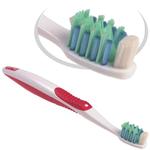
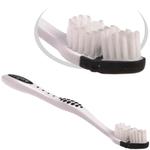
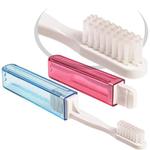
CrissCross bristles | Flexible joint | Folding handle
Future toothbrush innovations following this pattern (Distribution) may include:
1.
Replaceable heads - bristles wear out? Replace just the head, keep the handle, and save money and space! (Already used in electric toothbrushes and razors).
2. Breakable bristle tips - after a certain period of use the bristle edges break, exposing a new, sharp and effective edge.
3. Rotating handle - (rotating around the length axis, with a few fixed "stops") - for convenient handling and smoother operation.
D. "Multiplication" of Toothbrush Components
"Multiplication" is perhaps the most straightforward thinking tool, and you can probably guess how it works. It focuses on the product’s components (e.g. - handle, head, and bristles). The logic is simple - choose a component, multiply it (e.g. - two handles, two heads) and try to see what it’s good for.
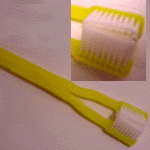
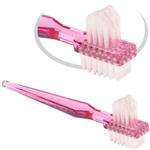
Front to front heads | Back-to-back bristles
Good examples of the Multiplication pattern are the back-to-back
bristles (for cleaning two types of teeth areas), and the double-headed "front to front" toothbrush - an existing product that cleans both the front and back of a tooth simultaneously. Future innovations following this pattern may include a double-headed "side by side" toothbrush, one head for the teeth, another for the gums. Another possibility is a "triple
headed toothbrush" - for brushing the front, top and back of the teeth simultaneously.
For
the third part of this article click here.
Go to: Part
I | Part II | Part III | Part IV
